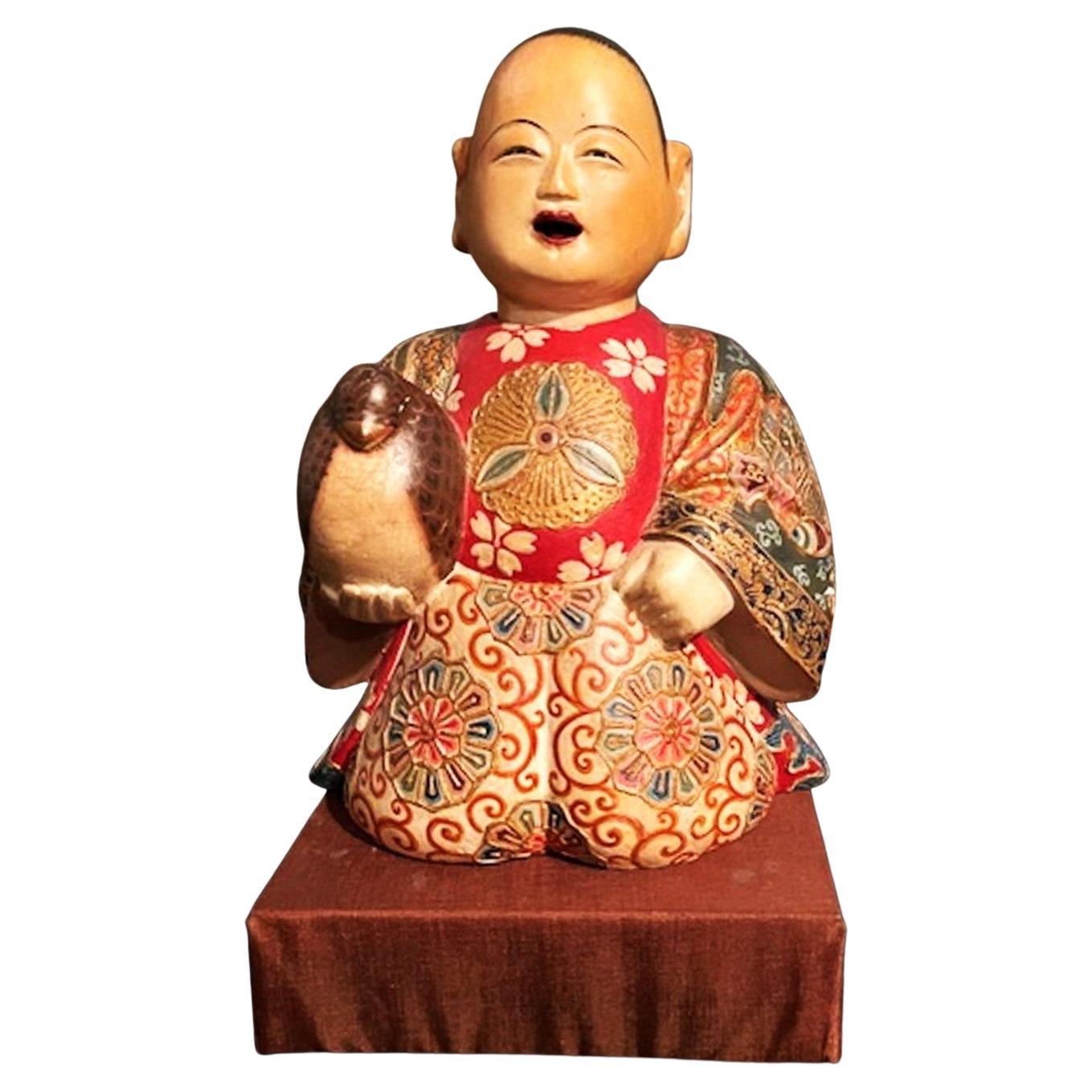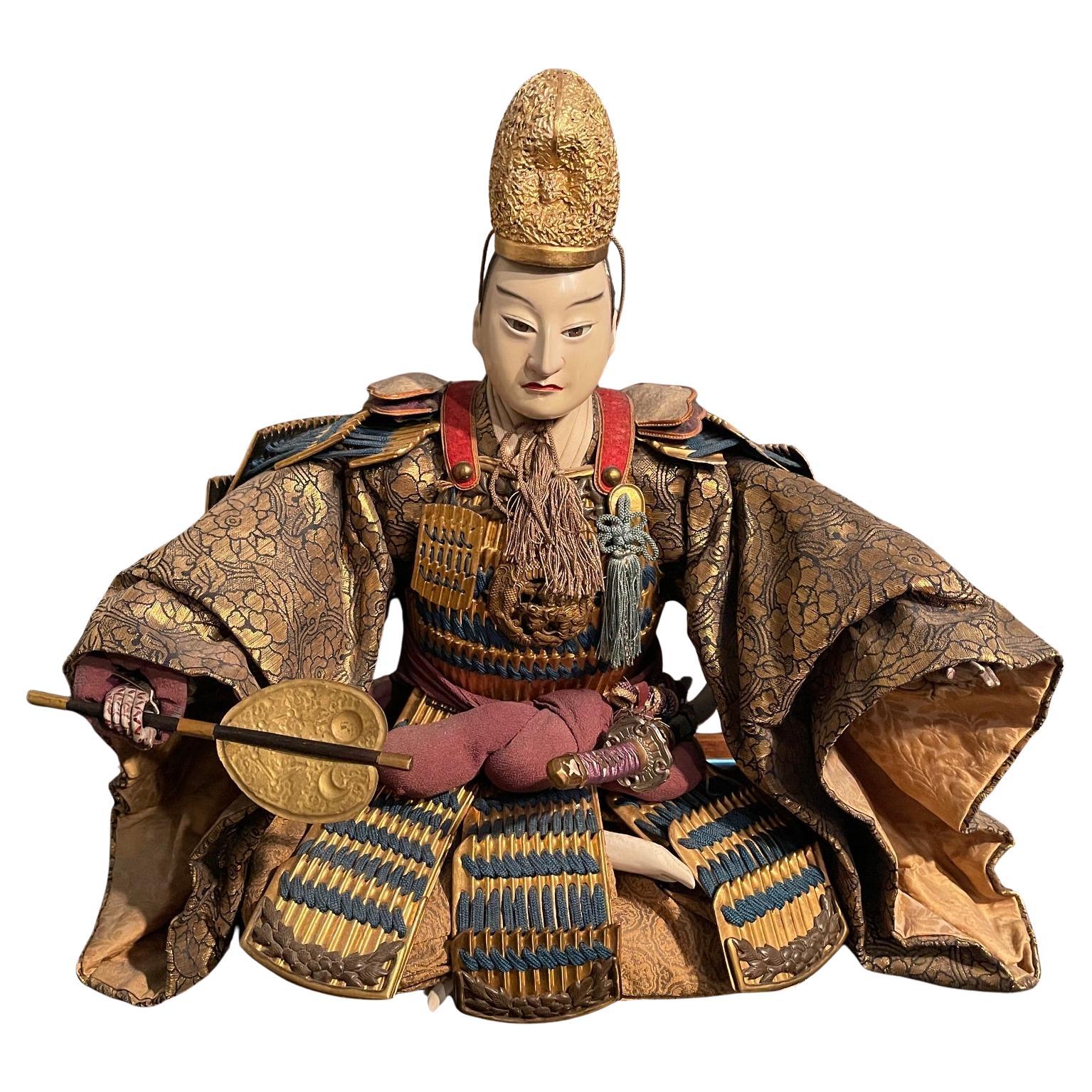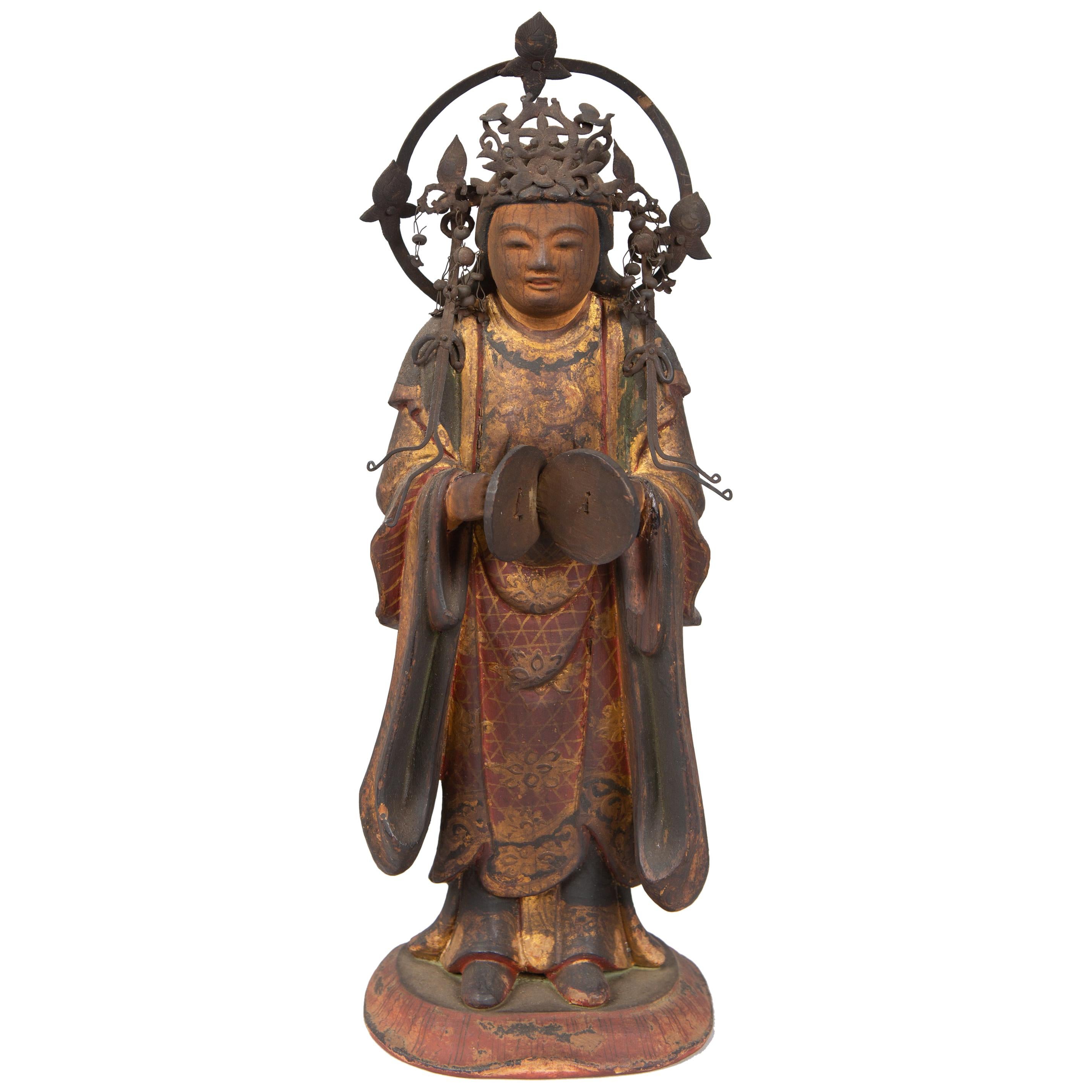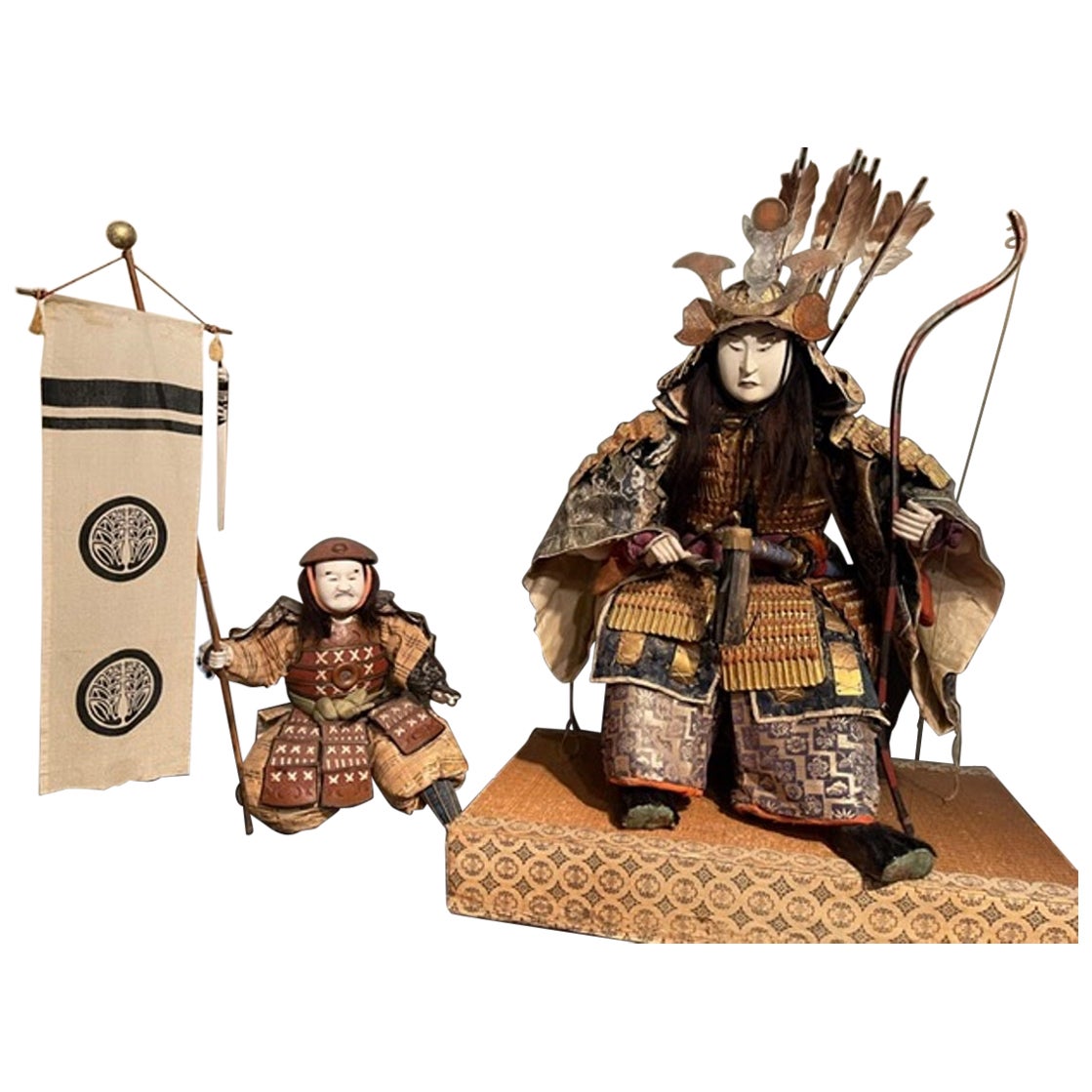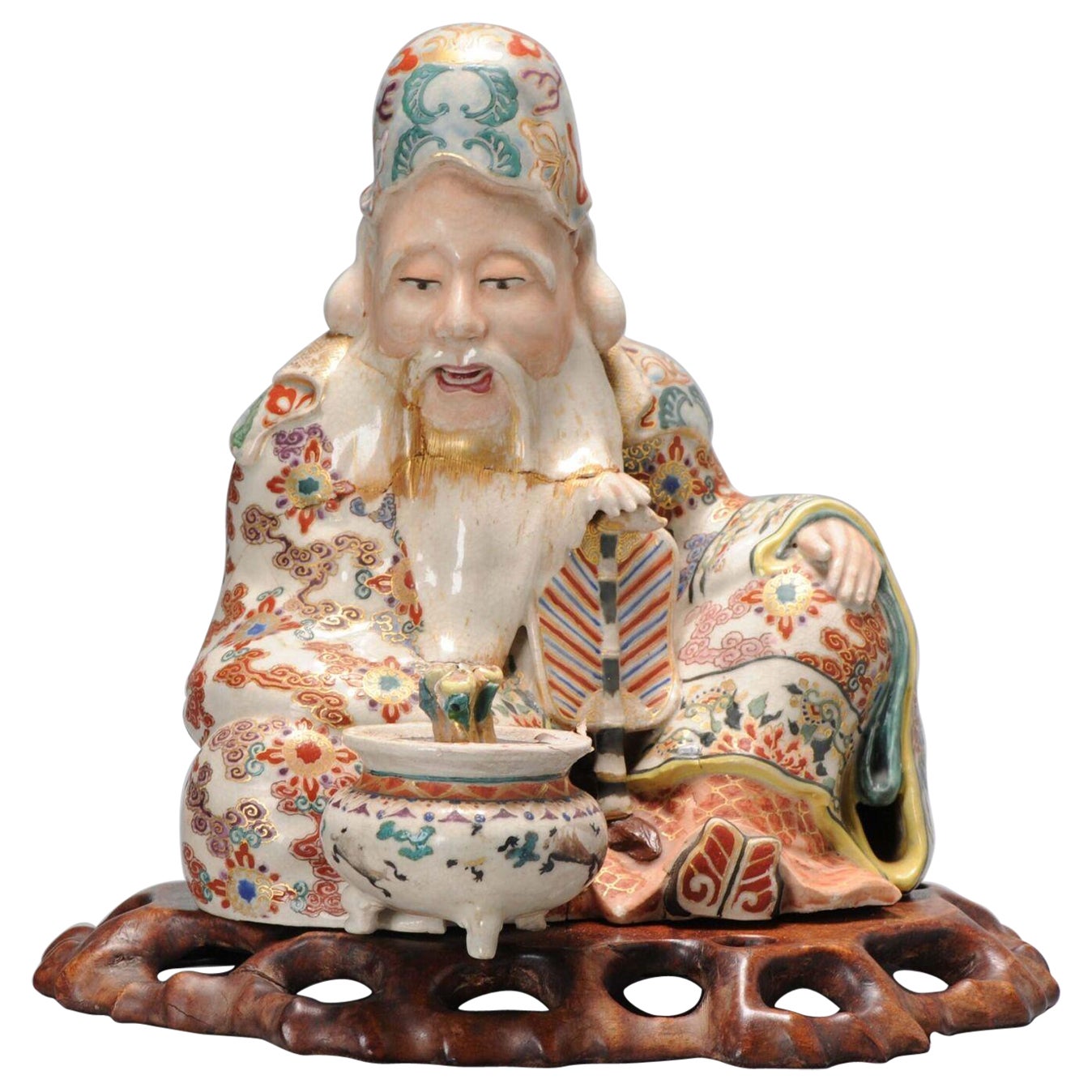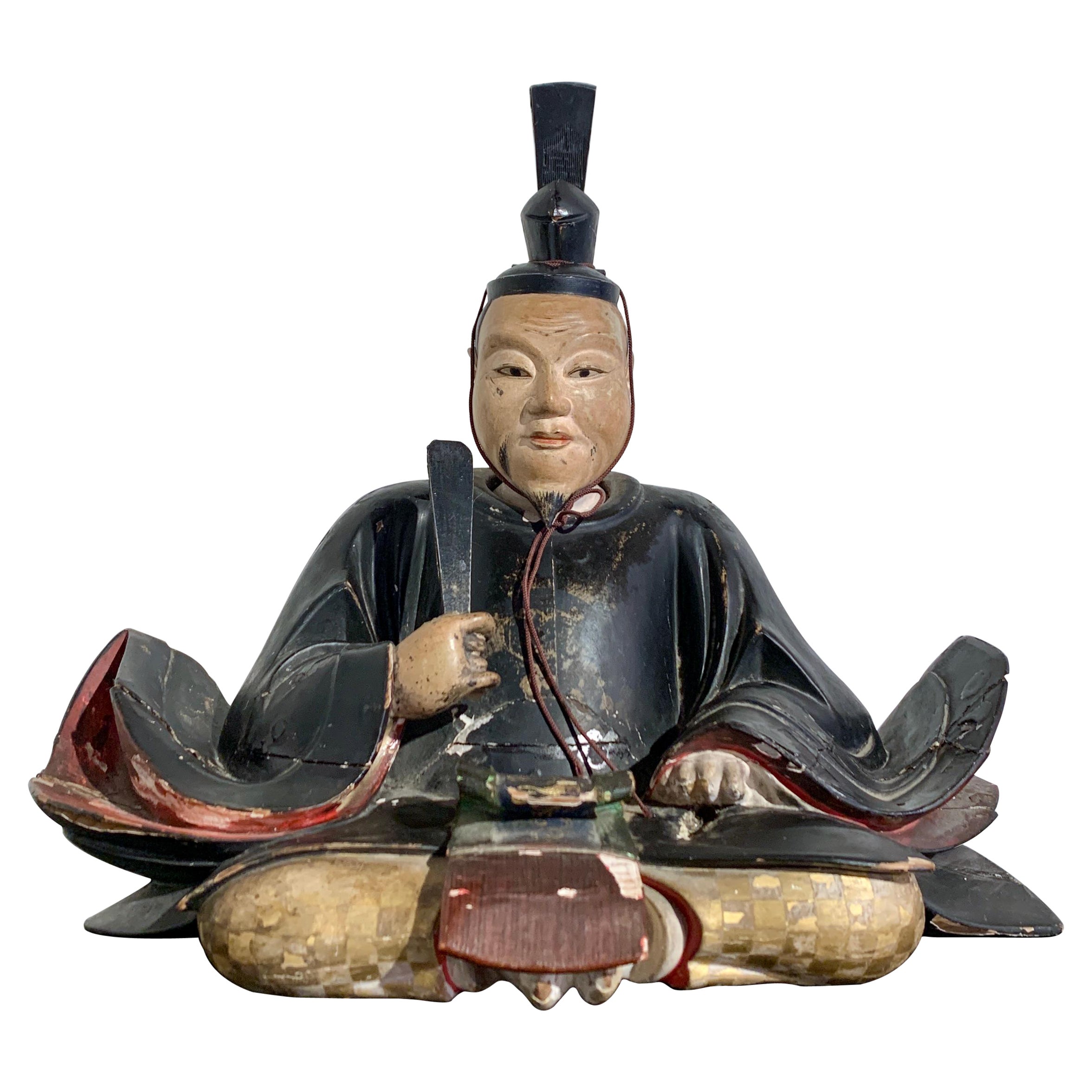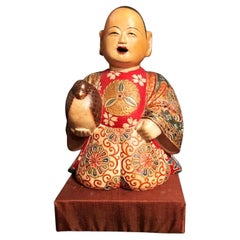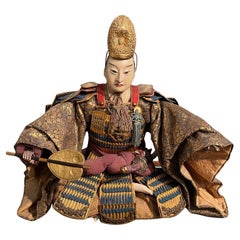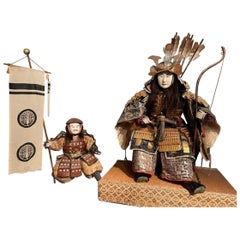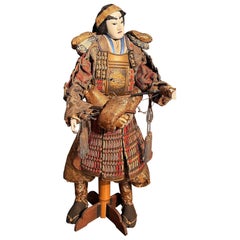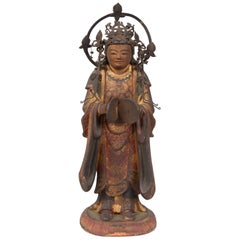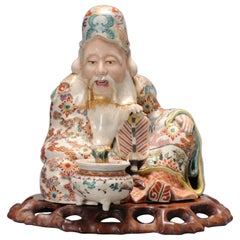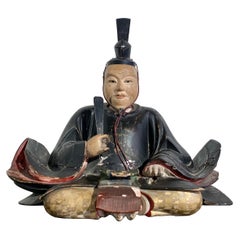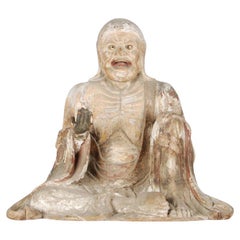Items Similar to Japanese Edo Period Dragon God Ningyô, Ca. 1820
Want more images or videos?
Request additional images or videos from the seller
1 of 10
Japanese Edo Period Dragon God Ningyô, Ca. 1820
$24,500
£18,603.43
€21,274.41
CA$34,230.05
A$38,071.29
CHF 19,879.64
MX$463,287.11
NOK 253,893.40
SEK 238,107.22
DKK 158,779.09
Shipping
Retrieving quote...The 1stDibs Promise:
Authenticity Guarantee,
Money-Back Guarantee,
24-Hour Cancellation
About the Item
Japanese Edo Period Dragon God Ningyô, Ca. 1820
DIMENSIONS
Height: 26 inches over all
Minor wear in textiles.
Fine antique condition
ABOUT
Musha-Ningyô (warrior doll) depicting Ryujin, the Undersea Dragon God, for the Boy's Day Display, having head and hands made of wood and covered in a red pigmented gofun with a fierce grimacing expression, bared teeth, large inset glass eyes, and vibrant red hair capped by an elaborate dragon which extends down his back, He’s wearing a sea green sumptuous silk brocade outer coat secured at the waist by a formal court style belt with brocade capped ends, over a gold silk brocade inner kimono tucked into white figured silk hakama trousers, holding the tide-shifting jewel in his right hand and exotic spear in his left, Mounted on a wooden platform base with an elaborately carved frontispiece. Exhibited at the Mingei International Museum (2005). Published in Ningyô: The Art of the Japanese Doll, p. 149. In the Boy's Day context, Ryujin is most noted for supplying to Empress Jingu the tide-shifting gems which allowed her to defeat the Korean to victory.
- Dimensions:Height: 26 in (66.04 cm)Width: 26 in (66.04 cm)Depth: 26 in (66.04 cm)
- Style:Japonisme (Of the Period)
- Materials and Techniques:
- Place of Origin:
- Period:
- Date of Manufacture:ca. 1820
- Condition:Wear consistent with age and use. We make our best effort to provide a fair and descriptive condition report. Please examine photos attentively, as they are part of the description. Send us a message to request more details or discuss price.
- Seller Location:New York, NY
- Reference Number:1stDibs: LU2819344674202
About the Seller
5.0
Vetted Professional Seller
Every seller passes strict standards for authenticity and reliability
Established in 1993
1stDibs seller since 2017
83 sales on 1stDibs
Typical response time: 11 hours
- ShippingRetrieving quote...Shipping from: New York, NY
- Return Policy
Authenticity Guarantee
In the unlikely event there’s an issue with an item’s authenticity, contact us within 1 year for a full refund. DetailsMoney-Back Guarantee
If your item is not as described, is damaged in transit, or does not arrive, contact us within 7 days for a full refund. Details24-Hour Cancellation
You have a 24-hour grace period in which to reconsider your purchase, with no questions asked.Vetted Professional Sellers
Our world-class sellers must adhere to strict standards for service and quality, maintaining the integrity of our listings.Price-Match Guarantee
If you find that a seller listed the same item for a lower price elsewhere, we’ll match it.Trusted Global Delivery
Our best-in-class carrier network provides specialized shipping options worldwide, including custom delivery.More From This Seller
View AllJapanese Edo Period Saga Ningyo, Ca. 1850
Located in New York, NY
Japanese Edo Period Saga Ningyo, Ca. 1850
DIMENSIONS
Height: 9.5 inches
Width: 6 inches
Depth: 5 inches
Category
Antique 1850s Japanese Japonisme Figurative Sculptures
Materials
Wood
Japanese Edo Period Musha Ningyo Seating Samurai, Ca. 1800
Located in New York, NY
Japanese Edo Period Musha Ningyo Seating Samurai, Ca. 1800
DIMENSIONS
Height: 16 inches
Width: 19 inches
Depth: 10 inches
ABOUT
Musha Ningyō (武者人形)- Literal meaning: "Warrior Dolls...
Category
Antique Early 1800s Japanese Japonisme Figurative Sculptures
Materials
Wood
Japanese Edo Period Yoshitsune and Bannerman Warrior Musha Ningyô, Ca. 1800
Located in New York, NY
Japanese Edo Period Grand-Scale Yoshitsune and Bannerman Warrior Musha Ningyô, Ca. 1800
DIMENSIONS
Warrior - Height: 31 inches with platform.
Bannerman - Height: 28 inches with b...
Category
Antique Early 1800s Japanese Japonisme Sculptures and Carvings
Materials
Wood
Japanese Meiji Period Elaborate Bunraku Puppeta, 19th Century
Located in New York, NY
Japanese Meiji Period Elaborate Bunraku Puppeta. 19th Century
Meiji Period (1868-1912)
Minor wear to textiles, fine antique condition,
Original Bamboo display stand.
DIMENSION
Height: 33 inches
Width: 18 inches
Depth: 9 inches
ABOUT
Bunraku (puppet) depicting the warrior Minamoto Yoshistune his head carved of wood and covered in a fine white gofun with painted details, face of a handsome youth with trigger mechanism allowing for the eyebrows to raise and lower and the eyes to shift from side, is wearing military armor with signature dragon on his breastplate ,brocade patterning of his thick obi tie, sumptuous silk brocade kimono and brocade hakama trousers with the Minamoto Clan pattern, silk tabi socks...
Category
Antique Mid-19th Century Japanese Japonisme Figurative Sculptures
Materials
Wood
Japanese Edo Period Okimono Carving of a Mythological Figure of Kirin, Ca. 1860
Located in New York, NY
Japanese Edo Period Okimono Carving of a Mythological Figure of Kirin, Ca. 1860
(Edo Period 1603-1868) 19th Century
DIMENSIONS:
Height: 13 i...
Category
Antique 1860s Japanese Figurative Sculptures
Materials
Wood
Japanese Meiji Period Gosho Ningyô of the First Emperor, Jimmu, Ca. 190
Located in New York, NY
Japanese Meiji Period Gosho Ningyô of Jimmu, the First Emperor of Japan, Ca. 1900
DIMENSIONS:
Height: 8.5 inches
Widt...
Category
Antique Early 1900s Japanese Japonisme Toys and Dolls
Materials
Ceramic
You May Also Like
16th Century Japanese Sculpture of a Buddhist Tenbu
Located in Hudson, NY
16th century Japanese sculpture of a Buddhist Tenbu, Late Momoyama period (1333-1598) sculpture dated "Bunroku 3", or 1594, in ink on the back. T...
Category
Antique 16th Century Japanese Sculptures and Carvings
Materials
Metal, Gold Leaf
Antique Japanese Sozan of Satsuma Statue Shou Lao Immortal, 19th Century
Located in Amsterdam, Noord Holland
A Japanese Satsuma figure, Large size, Meiji period. There are also turtles on the planter.
Very nice craftmenship.
Additional information:
Material: Porcelain & Pottery
Region of O...
Category
Antique 19th Century Japanese Figurative Sculptures
Materials
Porcelain
$3,065 Sale Price
20% Off
Japanese Carved and Lacquered Wood Shogun, Edo Period, 19th Century, Japan
Located in Austin, TX
An unusual Japanese carved wood, lacquer, and gilt decorated portrait sculpture of a shogun, Edo Period, early 19th century, Japan.
The unidentified shogun (possibly Tokugawa Iey...
Category
Antique Mid-19th Century Japanese Edo Sculptures and Carvings
Materials
Wood, Lacquer
Antique Japanese Statue of Datsue-ba or Shozuka No Baba, circa 14th C
Located in Prahran, Victoria
Japanese statue of Datsue-ba also known as Shozuka no Baba, Kamakura- Muromachi period.
Antique Japanese statue of Datsue-ba or Shozuka no B...
Category
Antique 15th Century and Earlier Japanese Other Sculptures
Materials
Cypress
Japanese Samurai Doll, End of 18th Century
Located in Roma, IT
Beautiful antique Samurai Doll, Japanese manufacture, end of 18th century.
Given as a present to young boys becoming adults, it is finely decorated with original 18th century dresse...
Category
Antique Late 18th Century Japanese Japonisme Sculptures and Carvings
Materials
Glass, Wood
Japanese Lacquered and Gilt Wood Buddhism Statue from Edo Period
Located in Atlanta, GA
An exceptional and wood statue of Buddhism Guardian Seitaka Doji from Japan circa Edo period (1603-1868), likely the earlier part of 17th century. One of two chief attendants of Fudou Myouou (the other being Kongara Doji), the name of Seitaka Doji is a transliteration of Sanskrit "Cetaka", meaning servant, slave, and he is said to personify expedient action. He is most commonly found on the right side of Fudou, together with Kongara Doji on the left, forming the Immovable triad, Fudou Sanzon, the terror of evil doers. Seitaka largely adheres to the iconography of a wrathful youth with fleshy body and face, skin in the color of a red lotus, has his hair tied in five knots, and holds a vajra in his left hand and a vajra-club in his right hand, but the actual artistic representations of him in Japan do...
Category
Antique 17th Century Japanese Japonisme Sculptures and Carvings
Materials
Metal
More Ways To Browse
Used Furniture Redding Ca
Japanese Dragon
Antique Japanese Dragon
Dragon Silk
Japanese Warrior
Korean Textile
Antique End Of Day Glass
Doll Display
Green Kimono
Sea Dragon
Japanese Wood Dolls
Edo Period Carved Wood
Wooden Carved Dragon
Wood Japanese Dragons
Green Silk Pants
Antique Silk Kimono
Antique Silk Kimonos
Gold Brocade Coat
